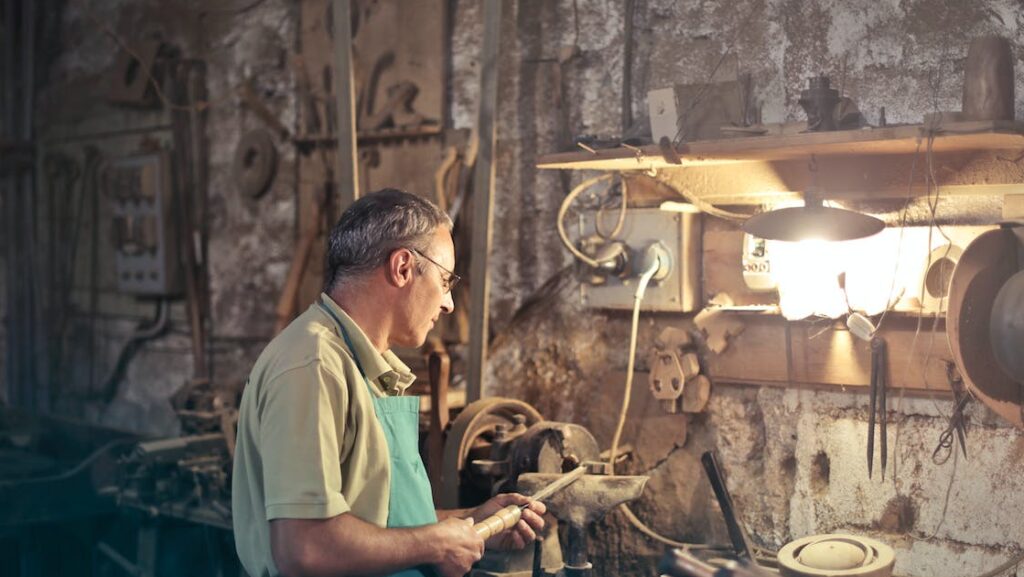How Young Professionals Can Bring Sustainability to Corporate Jobs?
The term young professionals is being used a lot nowadays in the corporate world. But does anyone know what it signifies? Or how can these young professionals help office jobs become more sustainable? Well, young professionals are people in the age group of 20-49. These individuals place a lot of emphasis on maintaining sustainability in their workplace for a stress-free and better environment. As climate changes are taking place with other environmental changes they are now highlighting the importance of a better workplace system. In 2024 several companies are themselves practicing many sustainability tips. Even the new workers are keeping an eye on the jobs that embrace these practices when choosing where to work. As the younger professionals understand and embrace sustainability it is helping the environment a lot. It helps in transforming and paving a path to a more sustainable future ahead. What Defines Workplace Sustainability? When young professionals or anybody else wants to create a sustainable environment they need to implement certain things. Such as reducing waste, eco-friendly practices, and solutions that require less energy. It aims to achieve business objectives without adverse environmental effects. ESG criteria assess a company’s impact, considering factors. The factors are like: These factors foster a sense of well-being among employees and identify areas for improvement to ensure a greener future. But now the main question is how can young professionals make a corporate job sustainable. Different Ways In Which Young Professionals Create A Sustainable Corporate Job Environment In 2024 Propose The Idea Of Remote Work. Providing employees with flexible work-from-home options offers numerous advantages. Many organizations have reduced or completely removed their office spaces as a consequence of using this operational approach. It further leads to cost savings in terms of rent, power, machinery, snacks, and other related expenditures. The concepts of sustainability may be embraced via the practices of reducing, reusing, and recycling. Every young professional in a company needs to initiate the methods of reducing, recycling, and reusing to achieve sustainability. Embracing the 3R approach means finding ways to reuse materials and products while being mindful of resource consumption in daily activities. Young Professionals Can Work Towards Establishing A Paperless Office. Eliminating paper consumption entirely in your business is a difficult task, but you may begin by reducing paper waste. Promote the practice of staff members conserving paper and ink by printing only when necessary. It is important to maintain a regular supply of environmentally friendly paper for printers in order to foster a more sustainable working milieu. It is essential to actively contribute towards accomplishing all of the UN Sustainable Development Goals. There are a set of 17 total sustainable development goals. These goals are mainly under the objectives of the 2023 agenda. They cover a variety of world challenges like climate change, environmental degradation, poverty, gender inequality, and so on. Following these practices makes sure that there is alignment between the company’s goals and culture. Engage in the process of incorporating SDGs into your organizational environment. Some goals are: Calculate Your Carbon Footprint. Dealing with your company’s carbon footprint can be eye-opening, but understanding your current situation is the initial move toward making meaningful progress. This tool for monitoring the environment in a new tab allows you to calculate your company’s carbon footprint and take steps to reduce your organization’s environmental footprint. Make The Shift Towards Green And Clean Energy Sources. Transitioning the energy source for the workplace is often a simple procedure, just requiring a short phone call to the energy supplier. Opting for renewable energy as opposed to the combustion of fossil fuels is a more prudent decision for sustained use due to its lack of emission of detrimental greenhouse gas emissions. Introducing Zero Waste And Energy-Efficient Bathroom Solutions. In the context of adopting a more ecologically conscious way of life, bathrooms and kitchens provide the most promising opportunities for effecting good change, since these spaces tend to use the highest quantities of energy and materials. A little contribution yields significant benefits, thereby justifying the substitution of paper towels with heated hand dryers and the installation of low-flow faucets. Consider Installing Water-Saving Fixtures. One strategy to establish a more sustainable workplace involves minimizing water wastage within your organization. Easily reduce your company’s ecological footprint and your water consumption bill by setting up specific machinery to help preserve this vital resource for survival. Promote the use of environmentally sustainable transportation methods. Encouraging personnel to use public transportation wherever possible may successfully promote eco-consciousness. Furthermore, the absence of concerns around driving or navigating through traffic throughout their commute to work may potentially enhance their ability to reach their workstation with heightened mental acuity and vitality. Offer Training On Sustainability To Your Employees. The only way a company can be successful is if the entire team of employees follows certain goals. Young professionals can help give ideas or even start a training workshop to spread awareness for the same. They can cover topics like environmental issues, why is it important to save it, etc. This can motivate them to actively engage in such sustainable practices in turn getting better results. Conclusion Using innovation and technology is essential for tackling sustainability challenges. The technology used by young professionals enhances energy efficiency with control and monitoring systems. It is done also while advancements in solar and wind energy allow companies to generate more renewable energy. Accepting sustainable economic practices by young professionals, such as developed recycling and products that can be reused. It highlights the significant role of technology in promoting sustainability. Digital solutions elevate individuals’ quality of life through advancements in energy efficiency, employee welfare, sustainable growth, and inclusivity. Building sustainability in your job requires ongoing effort, but the return on investment is invaluable. Striving for ongoing enhancements in sustainable living positively impacts the company, society, and the world. Frequently Asked Questions
How Young Professionals Can Bring Sustainability to Corporate Jobs? Read More »








